Rising to the Challenge of a Pandemic
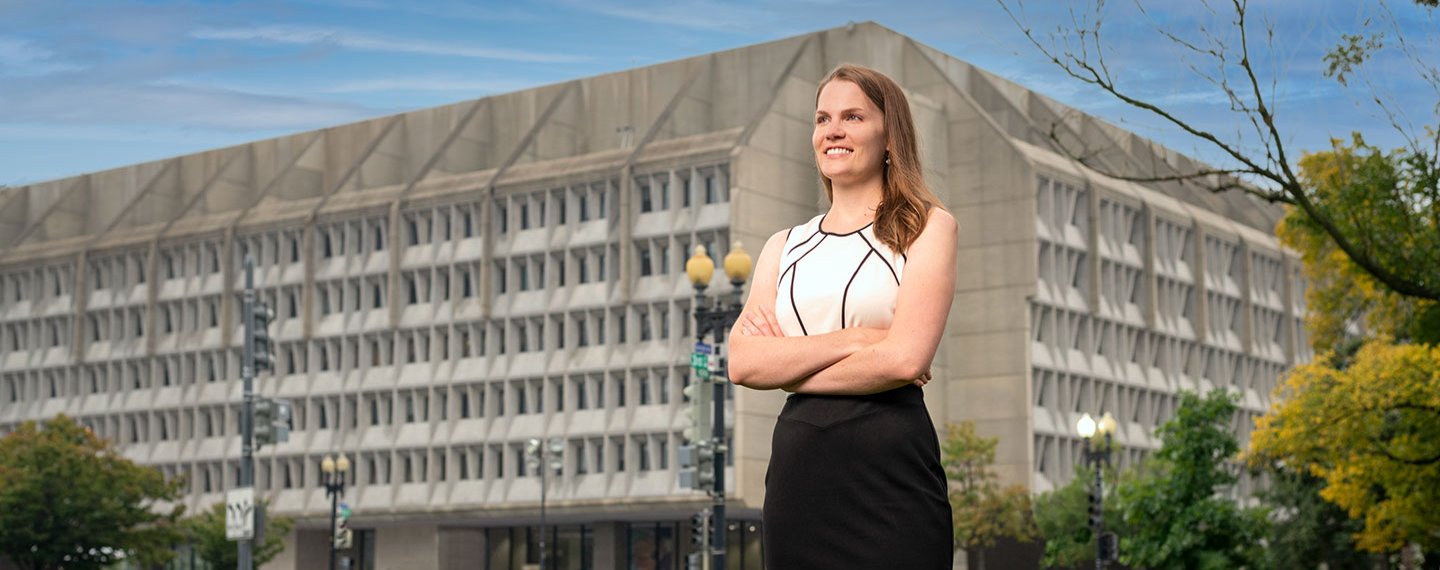
Ohio Wesleyan is one of the leading universities in America for preparing Ph.D. scientists, especially women in the life sciences. Since 2020, many have helped lead our battle against COVID, and the pandemic has shifted their careers.
As SARS-CoV-2 upended the world, Ohio Wesleyan University’s many women of science have pivoted, tirelessly continuing their work with global impact.
Whether they are working at research centers, public health agencies, pharmaceutical companies, or hospitals, none as undergraduates could have foreseen the importance of being a scientist during a pandemic and influencing public health.
“With a pandemic, everything— all the work—is always the most important it can be,” says Sara Koenig ’09, director of COVID-19 Advanced Technologies and research assistant professor at Ohio State University College of Medicine. “The pressure is always severe; we’re always on level nine. And that is pretty stressful.”
Each says the hands-on, research-based educational philosophy that began at Ohio Wesleyan is the foundation for their scientific careers.
“I took a scanning and transmission electron microscopy class at OWU, and we actually got to operate the microscopes ourselves. That’s unheard of,” says Briana Zellner ’13, now an ORISE (Oak Ridge Institute for Science and Education) fellow working for the Centers for Disease Control. “Even in grad school, we weren’t allowed to operate them.”
According to the National Science Foundation, OWU ranks No. 21 among all universities in the nation in the percentage of women graduates who earn a Ph.D. in the life or biological sciences.
“The research experience at OWU gives the sense of what you need to finish graduate school, which is being persistent, and patient, and determined,” says Laurie Anderson, Morris Family Professor of Natural Sciences.
Nationally, women drop out of STEM graduate programs at a higher proportion than men, but OWU women know what they’re facing.
“As undergrads, they’ve experienced the kind of mentorship that they would receive as a graduate student—really, a one-on-one apprenticeship—while at Ohio Wesleyan,” Anderson says. “So, they know what they’re getting into as they commit to a graduate program.”
Amy Downing, professor of zoology, stresses that a Ph.D. requires a keen skill in hypothesis-driven investigation. “We teach in small classroom environments, and we’re working on that skill right away.”
And don’t discount the mentorship of OWU’s large team of women science professors with active research careers.
Meredith Palmer ’11, a National Science Foundation postdoctoral fellow with Princeton University, says, “The strong female representation and mentorship in the OWU biology department was pivotal in helping get me to where I am today.”
“Seeing women professors who have families and watching them navigate their roles as women in science and in their personal life and in academia was very inspiring,” she says. “Having my introduction to academia be such a balanced, gender equitable department, I have that baseline, that expectation, that you can have a productive, diverse and creative ecosystem.”
Briana Zellner ’13
B.A., Microbiology, 2013
Ph.D., Biological and Biomedical Sciences, University of Toledo
ORISE Microbiology Fellow, Centers for Disease Control and Prevention Atlanta, Georgia
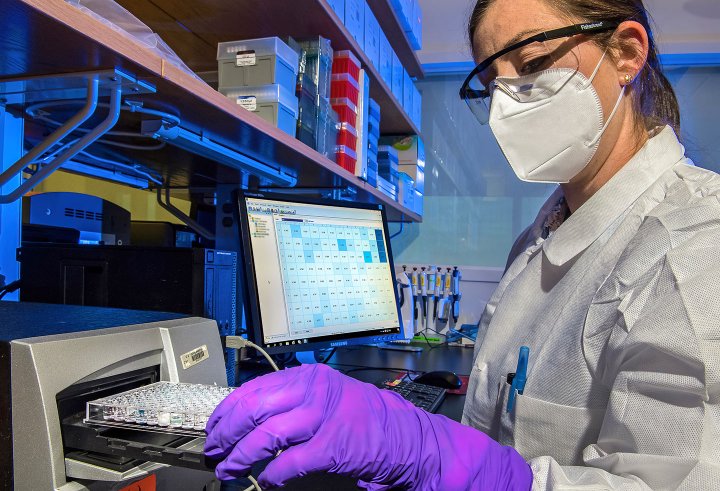
When Briana Zellner was hired by the Centers for Disease Control straight out of graduate school in February 2020, she believed she would be studying population immunity for diphtheria. But once the newly minted Ph.D. landed in Atlanta, she found herself tapped to become part of the CDC’s COVID-19 response.
Zellner is one of at least four OWU women graduates working at the CDC. She serves as a fellow in the microbial pathogenesis and immune response lab on a task force focused on developing an enzyme linked immunosorbent assay, more commonly known as ELISA, used to detect an antibody to SARS-CoV-2 in blood products.
I took a scanning and transmission electron microscopy class at OWU, and we actually got to operate the microscopes ourselves. That’s unheard of. Even in grad school, we weren’t allowed to operate them.
“We were receiving serum samples from organizations like the Red Cross, and we were testing those samples for antibodies to SARS-CoV-2,” the Tiffin, Ohio, native says. “All of our data is for surveillance purposes, not for diagnostic purposes.”
That work served as the backbone of a scientific paper concluding that COVID-19 was present in the United States as early as December 2019.
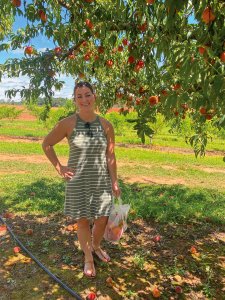
“When you combine our surveillance data with epidemiology data from other teams, that can help inform policy leaders about making decisions that promote and implement evidence-based policies for the greatest public health impact—things like masking, vaccination, and stay-at-home orders,” she says.
Once the vaccine distribution was established, her team moved to a newer, more precise assay on a luminex platform, which looks for three antigens instead of one, as ELISA does.
“This is the first time I’ve worked in public health, and you really get to see the direct impact, in real time,” Zellner says. “This is exciting. It’s really shown me that this is the direction I want to go in my career. I really do feel like I’m making a difference.”
Allison Kolbe ’12
B.A., Botany and Spanish, 2012
Ph.D., Biology, Washington State University
Science Policy Analyst, Office of Science and Data Policy, U.S. Department of Health and Human Services, Washington, D.C.
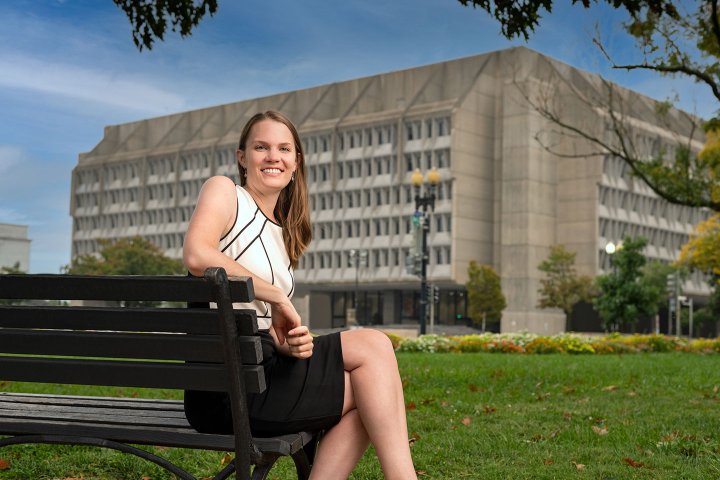
Early on at OWU, independent studies pushed Allison Kolbe ’12 toward a career in science.
“My freshman year I did a freshmen tutorial class, and there were four students in the class. We were doing research in the lab, we were reading papers, we were doing the things that you do as a grad student, but we were doing it as freshmen. That just gave me a leg up that you don’t get at other schools.”
And when she took Laura Tuhela-Reuining’s microbiology class, she never imagined someday living through a pandemic—or doing work that informs the U.S. government’s response to one.
“I remember talking about things like the next pandemic could happen in our lifetimes and that really sticking with me at the time,” Kolbe says. “And now, we are living through this.”
In early 2019, Kolbe’s work at the U.S. Department of Health and Human Services had focused on antimicrobial resistance and the opioid epidemic. Once COVID-19 arrived, however, her data-driven research shifted to focusing on creating solutions to the pandemic’s most urgent public health issues, including rolling out the vaccine, modeling vaccine hesitancy, and determining the best target areas for outreach and education efforts.
“I got into science policy not totally knowing how I could apply my skill set. But there’s a good opportunity to apply data science to address pressing issues,” says Kolbe.
The pandemic has spotlighted health disparities among communities and racial and ethnic groups.
“As a fellow human being, that’s not an acceptable thing,” the Stowe, Ohio, native says. “That’s something I’m hoping to work on a lot in the future, whether that’s looking at COVID-19 or thinking about some of the next public health crises, like climate change and environmental justice issues.”
Claire Hoptay ’09
B.A., Biochemistry and Microbiology, 2009
Ph.D., Microbiology and Immunology, George Washington University
Staff Scientist, Research Center for Genetic Medicine, Children’s National Hospital, College Park, Maryland

Claire Hoptay ’09 and her lab at Children’s National Hospital normally focus on airway-related research and childhood asthma. But shortly after COVID took hold, her group was assigned to build a new lab from scratch—this one serving as backup to existing infrastructure to handle the SARS-CoV-2 virus.
“There weren’t that many cases in children at that time, but we didn’t know if that would be the case,” says Hoptay, who manages the lab along with her research duties. “We were getting anything and everything in place that could be ready to use in any scenario.”
With the supply chain in disarray, that proved a challenge, “That meant a lot of hurry up and wait,” the Pittsburgh-area native says. “But as soon as the supplies and equipment came in, we’d rush in to set things up. Then, we’d realize what we’d need to tweak, order more things, and then wait again.”
With the backup now in place, Hoptay has returned to her research on asthma while still keeping an eye toward COVID. “Will kids who have had COVID have a different asthma impact as they go forward?” she asks.
Hoptay, who has worked in the same lab since her Ph.D. dissertation, found that the pandemic pushed her into new territory—protocol development—and she enjoyed it.
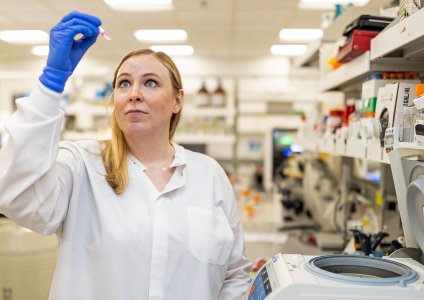
“That was something new for me—troubleshooting in the lab,” she says. “While I love my job now, I have confidence that if I wanted to go into R&D or to a biotech company, I could. The pandemic work has shown me that if the doors are there, I could go through them.”
She says that confidence began with the preparation and mentorship at OWU.
“For science and STEM, the classes and the labs at OWU especially are great. There are so many labs that you have to take with your courses, which are standard at OWU but not at other schools,” she says. “And there are just so many great female professors there. They are great examples of women being able to be in STEM and be successful. Having a professor and advisor that was a woman in chemistry was very powerful.”
Sara Koenig ’09
B.A., Botany- Microbiology, 2009
Ph.D., Biomedical Sciences, Ohio State University
Director of COVID-19 Advanced Technologies and Research Assistant Professor, Ohio State University College of Medicine, Columbus, Ohio
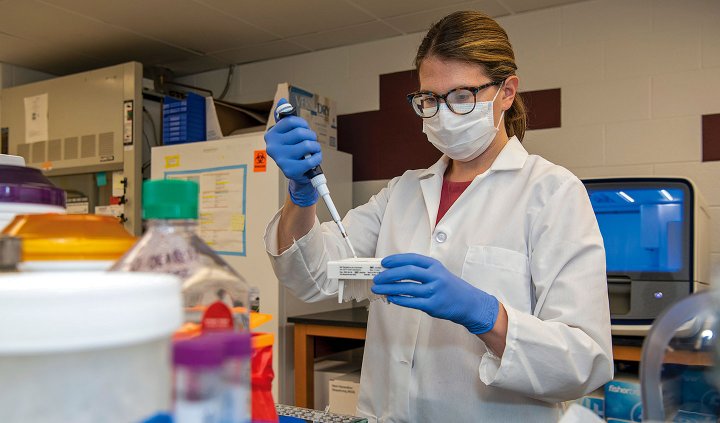
A background in molecular biology helped pull Sara Koenig, a research assistant professor specializing in cardiac arrhythmias and focused on cholesterol, into Ohio State University’s pandemic response with high throughput testing in March 2020.
“We set up this lab in 10 days, and it was an enormous effort with a team of about 50 people and everyone working 16-hour days, seven days a week,” says Koenig. A partnership with the state of Ohio made the OSU COVID-19 lab an extension of the Department of Health, conducting coordinated COVID testing along with other Ohio health systems, including the Cleveland Clinic, University Hospitals, and Children’s in Dayton.
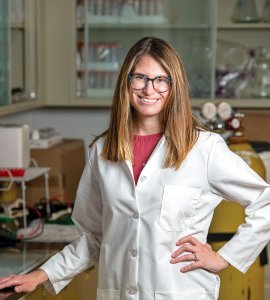
“Every month there was a new project, a new need, like helping smaller community hospitals establish labs and taking them through our workflow,” she adds.
Things started to slow down in January 2021, but the lull proved temporary as variants started taking hold.
“At that point, we all pivoted and established a next-generation sequencing lab, to sequence-identify all the positive specimens that were coming into OSU,” she adds.
Meanwhile, Koenig continues her research on cardiovascular genetics with two graduate students.
“I really do love research. I always have. It’s refreshing to work with students, and help turn them into scientists,” she says.
Every month there was a new project, a new need, like helping smaller community hospitals establish labs and taking them through our workflow.
However, her more organizational-oriented work during the pandemic sparked a new interest, and she now is studying in a master’s program focused on operational excellence at OSU’s Fisher College of Business.
“I definitely enjoy the operational and administrative roles I’ve had,” she says. “I want additional training and education to move my career in that direction.”
Amanda Robinson Panfil ’06
B.A. Microbiology, 2006
Ph.D., Cellular and Molecular Biology, University of Wisconsin-Madison
Assistant Professor, Ohio State University, College of Veterinary Medicine Columbus, Ohio

Shortly after the pandemic shut down her Ohio State University lab focused on the humanT-cell leukemia virus-1, Amanda Robinson Panfil ’06 followed her own curiosity and conducted a few basic experiments with some accessory proteins of the SARS-CoV-2 virus and their role in the immune response.
“Being experienced as a virologist, I understand a lot of what’s happening,” the Arlington, Ohio, native says. “I could have predicted there’d be variants, and that people who are vaccinated would have breakthrough infections. But seeing it all play out in real time is really something.”
Panfil has since returned to her passion—studying oncogenic viruses. “Even though we’re in a pandemic, these other viruses are not going to go away,” she says. “The people infected with those viruses are still going to need help.”
Investigating the only known human retrovirus that can cause cancer fascinates her. “I like understanding how it works, and how it can hijack the cell,” she says. “I also like seeing what results in transformation which leads to disease along with the different ways where you can try to treat that or cure it.”
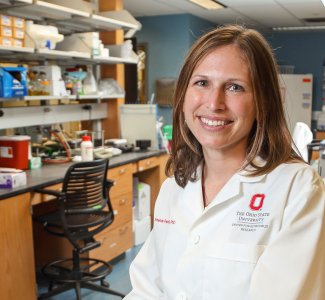
For Panfil—and all these alumnae—the pandemic also has underscored the importance of being teachers themselves to help educate the public about science.
“There’s a lot of misinformation,” she says. “If we can help people to understand what they’re reading about the virus and help them understand why that information is false, or why it’s true, and what that means for them, that’s what we as scientists need to do.
Investigating the only known human retrovirus that can cause cancer fascinates her. “I like understanding how it works, and how it can hijack the cell,” she says. “I also like seeing what results in transformation which leads to disease along with the different ways where you can try to treat that or cure it.”
Betty Villar ’07
B.A., Biochemistry, 2007
Ph.D., Computational Biochemistry, Boston University
Senior Scientist, Pfizer (Andover, Massachusetts)
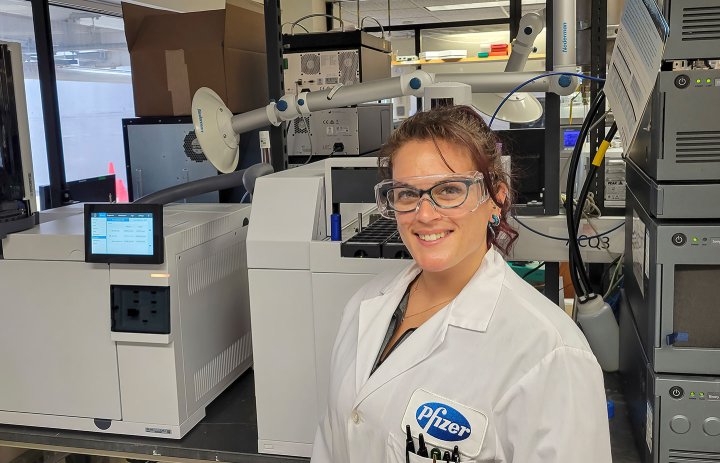
At OWU, Betty Villar ’07 felt empowered and encouraged.
“The sense I got from professors was there was no difference for women. The attitude was, ‘Oh, of course, you can go get a Ph.D. That could be your next step.’ You were never dissuaded from these considerations. And there was definitely encouragement.”
Now, working in Pfizer’s manufacturing science and technology group, Betty and her team have been smack in the middle of the pharmaceutical giant’s vaccine work.
While the pieces to develop mRNA vaccines were long in place, the work by Pfizer’s other scientists focused on creating the specifics to make it work for COVID. “Once they identified that piece that made it work for the COVID-19 virus, then our group was able to assist in a couple of ways.”
They conducted troubleshooting as her fellow scientists, working around the clock, moved the vaccine production processes to large-scale production. And with major hiccups in the supply chain, they tested secondary suppliers of materials, making everything meet rigorous standards.
I didn’t mind coming in on Saturday or Sunday, making sure that these processes were done as quickly as possible, because you’re working for the greater good.
“There were shortages of everything, everywhere,” she says. “If you’re used to getting something from a supplier, your work always comes out the same way, because you have certain expectations of what you’re getting. And then, suddenly, you need to find it from a different place.”
That requires a great deal of testing to make sure the new suppliers’ products meet all of the same expectations, “and it looks the same and behaves the same when you added it to the process,” the Elizabeth, N.J., native says.
Her work was important and meaningful. “To know that the numbers I give you or the yes-no on this I give you is what might determine the next step in the manufacturing scale production, that stuff sort of weighs on you a little bit,” she says. “But on the other hand, it does give you that drive. I didn’t mind coming in on Saturday or Sunday, making sure that these processes were done as quickly as possible, because you’re working for the greater good. It gives a different sense of what work is.”
Kristen Lear ’11
B.A., Zoology, 2011
Ph.D., Integrative Conservation, University of Georgia
Endangered Species Intervention Specialist, Bat Conservation International Fort Collins, Colorado
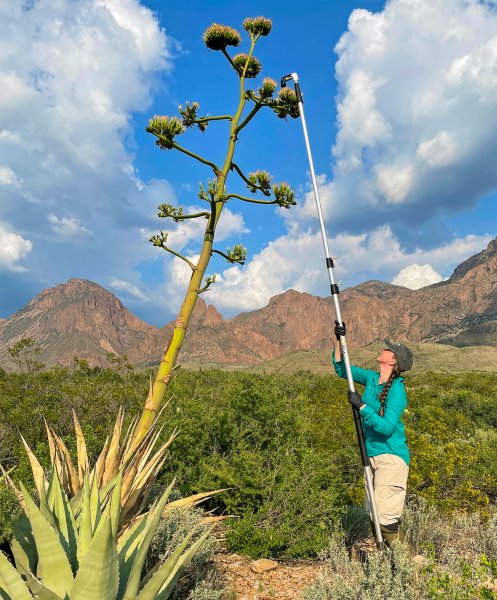
Her lifelong love of all creepy crawly animals led Kristen Lear ’11 to devote her career to one of Dracula’s favorite creatures—bats.
“I had pet rats in middle school and high school, and I love snakes and spiders. Bats fall into that group. They’re unnecessarily maligned,” says Lear, who received a Fulbright as she graduated from OWU to study endangered bats in Southern Australia.
Now, a year into her dream job of leading a binational agave initiative to restore agave plants vital to bat migration, she sees the pandemic underscoring how humans and wildlife are intricately linked.
“If we protect natural habitat for wildlife, there will be fewer occurrences of negative human and wildlife interactions,” Lear says. “Preserving natural habitat means we are not pushing them together in areas where the jumping of viruses and other pathogens can happen.”
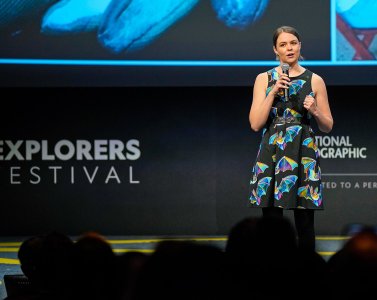
Lear, who first built bat houses as a 12-year-old Girl Scout in Cincinnati, deepened her reliance on a wide network of strong local partners, who have helped her understand the contexts of how the residents use their land and make their livelihoods. The pandemic has inspired Lear’s team of colleagues to develop a safer, less field-intensive process to sample bat DNA via EDNA— environmental DNA—which tests DNA bats leave behind on the flowers they’ve pollinated.
“OWU prepared me to do this work. They gave me the tools to think critically, to design my own research program and questions,” she says.
Meredith Palmer ’11
B.A., Zoology, 2011
Ph.D., Ecology Evolution and Behavior, University of Minnesota
National Science Foundation postdoctoral fellow, Princeton University

The tales Meredith Palmer’s British grandparents told of fighting off crocodiles and building bridges in Africa inspired her to lead a life of adventure.
Now a National Science Foundation postdoctoral fellow at Princeton University, the behavioral ecologist’s work focuses on predator-prey dynamics spaning across eastern and southern Africa and in North America. She conducts conservation work examining how large carnivore predators, such as lions and wolves, shape ecological communities.
Because she has always grappled with her family’s “very colonial type of activities,” she deliberately has worked to empower local people in African communities, training local researchers and field assistants the years.
When the COVID-19 pandemic halted her travels, these relationships with researchers on the ground in Tanzania and Mozambique allowed her long-term monitoring projects and conservation programs to move forward.
“We’ve really been able to continue to do the work that we do through COVID even though I’m not there personally to oversee our different projects,” she says.
The strong female representation and mentorship in the OWU biology department was pivotal in helping get me to where I am today.
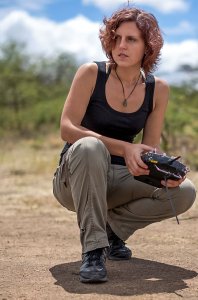
Her future research will concentrate more on infectious diseases, as she moves in January to a new post-doc position partially funded by the National Science Foundation. At the University of Glasgow, she’ll be examining the ecology of emerging infectious diseases, studying parasite transmission in the great wildebeest migration in Tanzania.
“Until now, I’ve been focused on predators from the outside environment. Parasites are just predators that eat you from the inside,” Palmer says.
Palmer’s robust involvement in public outreach and citizen science projects, including camera trapping, now inspires the professors who inspired her.
“It’s a great tool for teaching, especially for students who don’t have good access to field sites,” says Professor Laurie Anderson. “They can look at these photographs and actually contribute to the research by scoring photographs for the presence and absence of wildlife. And that’s really cool.”
By Julianne Hill, a freelance writer, producer, and educator based in Chicago.
